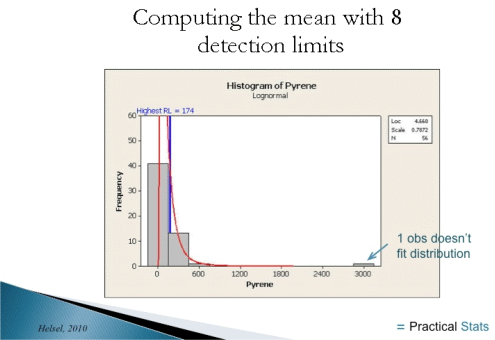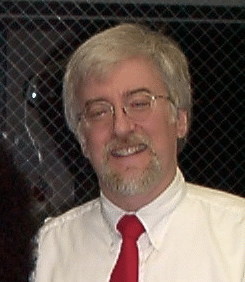On-Demand Webinars
ANALYTICAL DETECTS:
Why Subbing One-Half of the Detection Limit is Trouble and
What you Can do Instead
Measurements of trace chemicals in environmental media (water, air, soils, biota) frequently result in values reported only as less than the laboratory reporting limit ("less-thans", "nondetects", and "qualified values"). The most commonly-used method for incorporating nondetects is to substitute one-half the reporting limit and continue as usual. This may obscure patterns and trends that are present, or may create those that are not present in the original data. It is fraught with error.
Two easily-implemented methods are available that avoid the problems with substitution. They can be used to compute summary statistics (mean, median), perform hypothesis tests, and compute regression models. The two methods incorporate data with one detection limit, or can be adapted to work with multiple detection limits.
Webinar Objectives and Highlights:
- Why substituting one-half the detection limit causes problems
- The effects of substitution on data
- The effects of substitution on means, regression, hypothesis tests
- Two easy methods that actually work with nondetect data
What You Will Learn:
- You will be able to summarize (what's a typical value?) data with nondetects correctly.
- You will no longer find trends and differences that are not really there (as substitution can do).
- You will no longer miss trends and differences that ARE really there (as substitution can do).
- You will know of easy methods for nondetects that actually work well.

Whether you want to learn more about statistical methods or managing detection limits, this webinar will provide participants with information that is not available elsewhere on the web.
Instructor Bio
Dennis Helsel, PhD
Author of Nondetects And Data Analysis: Statistics for Censored Environmental Data
 Dennis Helsel, PhD has 32 years experience applying statistics to practical issues in environmental sciences. He is the owner and lead scientist of Practical Stats, an environmental statistics training and consulting firm. He is the lead author of two textbooks, Statistical Methods in Water Resources (USGS, 2002), and Nondetects And Data Analysis: Statistics for Censored Environmental Data (Wiley, 2005), as well chapters in two handbooks and over 50 journal articles.
Dennis Helsel, PhD has 32 years experience applying statistics to practical issues in environmental sciences. He is the owner and lead scientist of Practical Stats, an environmental statistics training and consulting firm. He is the lead author of two textbooks, Statistical Methods in Water Resources (USGS, 2002), and Nondetects And Data Analysis: Statistics for Censored Environmental Data (Wiley, 2005), as well chapters in two handbooks and over 50 journal articles.
Dr. Helsel was a 2003 recipient of the Distinguished Achievement Award from the American Statistical Association's section on Statistics and the Environment, and of the Dept. of Interior's Distinguished Service Award in 2007. He has been invited to conduct training classes on environmental statistics to the Chinese Ministry of Water Resources; to the Umweltbundesamt (German Environment Agency); to students at the Helsinki University of Technology, Finland; and in the United States through the American Statistical Association.
| Fee: |
299.00 USD Per Webinar
|
| Materials and Downloads: |
Session Slides (PDF)
Record of Attendance Form (PDF)
|
Number of
Participants: |
AS OF JUNE 1, 2020, WEBINARS ARE PRICED FOR INDIVIDUALS WORKING ALONE. Pricing is discounted for individual registrations for people working alone.
|
Continuing
Education
Certificates: |
$14.95 each. Official CEU certificates are available as an option. After successful completion of this webinar, a link will be provided to order a certificate.
|
| Access: |
On-demand, anytime 24/7. |
| Discounts: |
Buy 3 on-demand webinars, and get 3 on-demand webinars for free!
|
| Duration: |
90 minutes |
| PDH Earned: |
1.5 hours |
| |
|
| Instructor(s): |
Dennis Helsel, PhD
Author of Nondetects And Data Analysis: Statistics for Censored Environmental Data |
|
Become A Member
It's Free, It's Easy and as a
Member you'll enjoy...
- Exclusive Videos
- Special Pricing
- And Much More
|
|
Join
|
Learn More
|
Association of Environmental
& Engineering Geologists
|